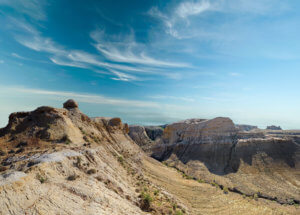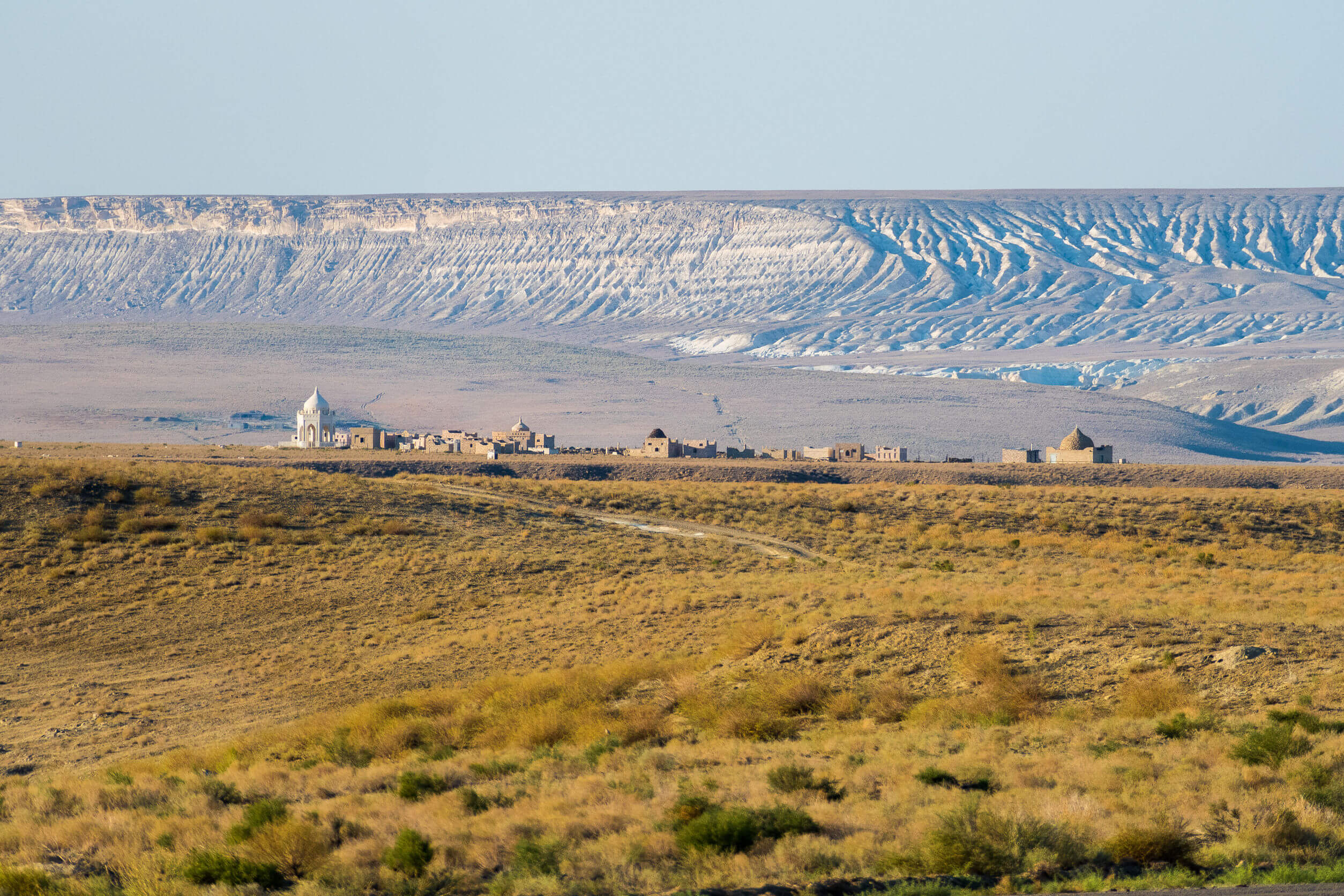
Twenty kilometres north of Senek village is Shopan-Ata, a circa 10th-century underground mosque that is one of Mangystau’s oldest religious sites.
It was first surveyed in the early 1950s by a research team led by Malbagar Mendikulov, a prominent Kazakh architect who incorporated traditional designs into his architectural work as a way to preserve national character and counteract Modernism’s rise in popularity. Undoubtedly Mendikulov encountered an abundance of inspiration from Shopan-Ata’s multiple rock-hewn rooms, sunlit chambers, and 3,000+ graves scattered above ground.

According to R. Sala and J.M. Deom’s Mangyshlak’s Sacred Caves, in Odyssey Books & Maps’ Kazakhstan guide, there’s a legend that Shopan-Ata – who was a 12th-cenutry saint of shepherds – was at a dervish led by Sufi and Turkic poet Ahmad Yasawi. After the ritual was over, Yasawi asked Shopan-Ata and his fellow disciples to shoot an arrow through a shangyrak (the wooden hole of a yurt). Their mission was to travel to wherever their arrow struck, preach Sufism, and build a new masjid. Lo and behold, Shopan-Ata’s landed on the site of today’s mosque.
At the time, the land was owned by Bayan, a rich landlord (bai), so Shopan-Ata offered to work for him for free as a shepherd. In return, Bayan said he’d pay him for every white sheep born. He ended up weaseling out of paying him, despite now having a whole flock of new-born white sheep. Growing increasingly greedy, Bayan said he would pay him the following year if a black flock was born. Much to his surprise, history repeated itself and a black flock was born. Finally, Bayan realised that Shopan-Ata was a man to revere, and offered him all of his belongings.
When arriving at Shopan-Ata, the first place you come to is a stone-built, roofless mausoleum sat atop a plateau belonging to Shopan-Ata’s son-in-law. It’s here that pilgrims recite a prayer and tie a prayer cloth on to the mosque before venturing downhill to the main site, which has a guesthouse and is adjacent to a large nercropolis.
The underground mosque of Shopan-Ata is cut into series of rock faces. Inside, you’ll find oculus roofs, a prayer room with side niches, and various chambers containing the graves of Shopan-Ata, Darhan Bibi—his daughter, and Bibi Han—his wife. In the middle of Shopan-Ata and his wife’s chamber are a set of wooden poles leaning against an oculus. Here, pilgrims recite a prayer before walking counterclockwise three times around the poles. A similar ritual is conducted above ground at the grave of Shopan-Ata’s father-in-law, Bayan Baba. Nearby, there used to be a sacred phallus carved out of stone used for fertility rituals—worshippers would pour butter, melted lamb fat, or vegetable oil on its top and set it alight. For whatever reason, it has since disappeared according to this follow up video.
To reach Shopan-Ata from Aktau, head 140 km southeast on the A-33 and R-114 to Mangystau’s second-largest town, Zhanaozen. From there, follow the P-117 road to the twin towns of Bostan and Uzen (aka Kyzylsay). Follow the road east of here for 15 km, turn left and continue on another 30 km to reach Shopan-Ata.
Copyright © 2021 Planet Esoterica. All Rights Reserved.
Copyright © Planet Esoterica, 2021. No part of this site, www.planetesoterica.com, may be reproduced in whole or in part in any manner without the permission of the copyright owner. All rights reserved.
Made with 